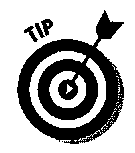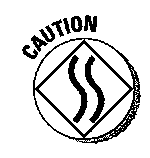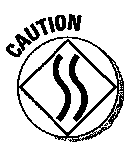Many people are willing to spend extra dollars for tires with names like MACHO WILDCATS or TOUGH GUYS embossed embossed in large white letters on the sidewalls, but did you know that a wealth of information is embossed on
them in quiet little black letters that can be more valuable in the long run? And this information is, free — if you know how to decode it. Even if you’re not the inquisitive type, the data in the following sections can help you when you buy and maintain tires.
Tire size codes
Until around 1978, tire sizes were indicated by alpha-numeric codes, such as D78-14. Then, with the adoption of the metric system, the codes changed drastically. Today, the new codes are much longer and provide more information. Tire dealers are required by law to have leaflets available that explain tire grades and ratings. The leaflets also tell you which metric codes replace the old alphanumeric designations.
For example, here’s the information provided by a common “P-metric” tire code, P205/75R-14:

P = Type of vehicle. (In this case, P = Passenger. Other codes include LT for Light Truck and T for Temporary or spare tire.)
205 = Tire section width, measured across the tread, from one sidewall to the other, in millimeters. (In this case, the tire width is 205.)
75 = Aspect ratio or tire series — the ratio of the tire’s sidewall height to its width. (In this case, the tire’s sidewall height is 75 percent of its width.) Tires with a low series (less than 70) are referred to as low-profile tires and have a short sidewall.
R = Tire type. (R = radial, B = bias-belted, D = diagonal or bias-ply, and E = elliptic. In this case, the tire is a radial.)
14 = Diameter of the wheel, measured in inches. (In this case, the diameter is 14 inches.)

Codes may differ slightly from one tire to another. In addition to the P-metric code, there are also European metric codes, which can be as simple as 155SR13 or as complex as 185/70R14 88S, but the data they disclose is pretty much the same.
Speed ratings
Sometimes an additional letter appears between the profile and tire type, such as P205/75SR14. The additional letter S refers to a speed rating. The speed rating represents the safest maximum speed for the tire. It tells you nothing about a tire’s construction, handling, or wearability, but measures the tire’s ability to endure the high temperatures that high speeds create. Here’s a list of what the speed rating letters mean:
F = 50 mph G = 56 mph J = 62 mph K = 68 mph L = 75 mph M = 81 mph N = 87 mph P = 93 mph Q = 100 mph R = 106 mph S = 112 mph T= 118 mph U = 124 mph H = 130 mph V = 149 mph Z = 149+ mph

You may also find the speed rating listed in conjunction with the tire’s load index, such as 97H. In this case, the 97 is the load index, and the H is the speed rating.
If your car originally came fitted with speed-rated tires, you should replace them with speed-rated tires.
Tire quality grade codes
The Uniform Tire Quality Grading System rates tires for treadwear, traction, and temperature, but because these ratings are set by manufacturers and not by an objective testing service, they may not be accurate. If you want to use this information to compare various brands, consult Uniform Tire Quality Grading, a free consumer pamphlet published by the National Highway Traffic Safety Administration, 400 7th St. SW, Washington, DC 20590. Your dealer should also have a copy on hand.
Look for these grades on tire sidewalls or on stickers affixed to the treads. Here’s what they mean:
Tread wear: A comparative number grade based on carefully controlled testing conditions. In the “real world,” a tire rated 200 would have twice the tread wear of one rated 100 — if all other wear factors were equal.
Traction: This AA, A, B, or C grade represents the tire’s ability to stop or wet asphalt and concrete pavement under controlled conditions (with AA being the best possible rating). The grades are based on straight-ahead braking only, not on cornering or turning. A tire with a C grade meets the government’s test, while tires with B, A, and AA (in ascending order) exceed government standards.
Temperature: This A, B, or C grade represents heat resistance and the tire’s capability to dissipate the heat if the tire is inflated properly and not overloaded. Grade C meets U.S. minimum standards, while grades B and A exceed government standards.
DOT identification and registration
The DOT identification number on the sidewall serves as a registration number for the tire in case of a recall. This number tells where and when the tire was manufactured. Most of the data in the code isn’t important for your purposes, but if you’re curious, the following example tells what the various letters and numbers of a sample DOT code, DOT WOKAABC 262, mean:
DOT indicates that the tire meets or exceeds U.S. Department of Transportation safety standards.
WO identifies the plant where the tire was made. Because tires are made at many different plants, you don’t need to know all the variations of this code. If it matters to you where your tires were made, ask the dealer.
KA indicates the tire size. (In this case, the tire size is P194/75R14. Because the tire size is also on the sidewall, you don’t need to know all the variations of this code, either.)
ABC identifies the brand or characteristics of the tire. Instead of decoding this piece, read the brochure that describes the tire in detail.
262 indicates when the tire was made. (In this case, the number 262 means that the tire was made during the 26th week of 1982. Nifty, huh?)

When you buy new tires, make sure that they’re properly registered. Under federal law, the dealer is required to put the tire’s DOT number and the dealer’s name and address on a form that is then sent to the manufacturer. Although tire outlets owned by manufacturers and certain brand-name outlets must send them in, independent tire dealers can simply fill out the forms and give them to customers to mail to the manufacturer. Unlike guarantees and warrantees, in case of a recall, you aren’t eligible to receive replacements unless your tires have been properly registered and you respond to the recall within ft days.
For more ideas about buying tires, see “Tips for Buying Tires,” later in this chapter.
Other sidewall information
Check the sidewalls for the following safety data, too:
MAX LOAD: How much weight the tire can bear safely, usually expressed in kilograms (kg) and pounds (lbs).
MAX PRESS: The maximum air pressure the tire can safely hold, usually expressed in pounds per square inch (psi).
MAX PRESS is not the pressure to maintain in your tires; you can find the manufacturer’s recommended pressure for the best handling and wear on the tire decal found on the door, door pillar, console, glove box, or trunk of your vehicle.

You can find instructions for checking tire pressure, reading treads for clues, and other work that you can do on your tires in the “Caring for Your Tires” section, later in this chapter.
